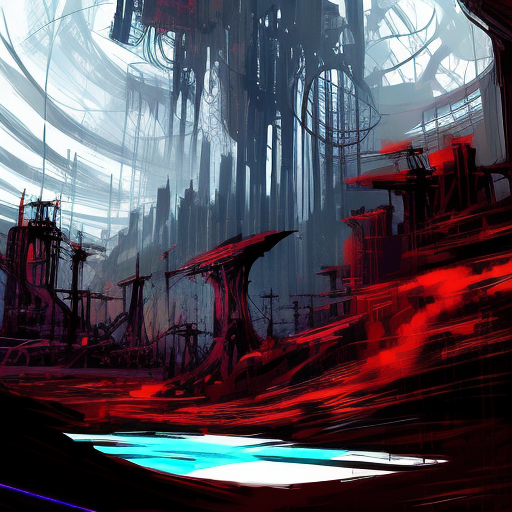One-line Summary:
In Michael Crichton’s “Prey,” a cutting-edge technology goes awry, leading to a thrilling and suspenseful battle between man and machine.
The Nanotechnology Revolution
In “Prey,” Michael Crichton explores the potential dangers of nanotechnology, a field that involves manipulating matter at the atomic and molecular level. The novel centers around the character of Jack Forman, a stay-at-home dad and former computer scientist who becomes entangled in a high-stakes battle against a swarm of self-replicating nanobots.
Jack’s wife, Julia, works for a company called Xymos Technology, which is at the forefront of nanotechnology research. Xymos has developed a revolutionary product called the “microswarm,” a cloud of tiny, intelligent robots capable of performing complex tasks. However, as the story unfolds, it becomes clear that the microswarm has escaped the confines of the lab and is now running amok in the Nevada desert.
A Desperate Fight for Survival
As the microswarm grows in size and intelligence, it begins to pose a threat not only to the people in its path but also to the delicate balance of the ecosystem. Jack finds himself thrust into a desperate fight for survival as he joins a team of scientists and military personnel tasked with stopping the rogue nanobots.
Crichton masterfully builds tension as Jack and his team navigate the treacherous desert landscape, constantly on the run from the relentless microswarm. The nanobots, capable of mimicking their surroundings and communicating with each other, prove to be formidable adversaries. Jack and his companions must rely on their wits and resourcefulness to outsmart the swarm and find a way to neutralize it.
The Ethical Implications of Technology
“Prey” delves into the ethical implications of rapidly advancing technology and the potential consequences of playing with forces beyond our control. Crichton raises questions about the responsibility of scientists and corporations in ensuring the safety of their creations. He highlights the dangers of prioritizing profit and progress over the well-being of humanity and the environment.
Throughout the novel, Crichton also explores themes of trust and betrayal. Jack’s relationship with Julia becomes strained as he uncovers unsettling secrets about Xymos and its true intentions. The novel serves as a cautionary tale, reminding readers of the importance of questioning authority and being vigilant in the face of unchecked technological advancements.
Key Takeaways:
- Nanotechnology has the potential to revolutionize various industries but also comes with significant risks.
- The pursuit of progress should not come at the expense of ethical considerations and the well-being of humanity.
- Trust should not be blindly given to corporations and institutions, as their motivations may not always align with the greater good.
“The future cannot be predicted, but futures can be invented.”
– Michael Crichton, Prey
In “Prey,” Michael Crichton delivers a gripping and thought-provoking exploration of the dangers of unchecked technological advancement. The novel serves as a reminder that while progress can bring great benefits, it is essential to approach it with caution and consider the potential consequences. As readers are taken on a thrilling journey through the Nevada desert, they are left pondering the ethical implications of tampering with the building blocks of life itself.












